Pest monographs are short summaries organized by common pest name in alphabetical order. If you have any questions or additional information about a particular pest, please email us at info@earthwiseagriculture.net.
Pest Monographs
PEST MONOGRAPHS
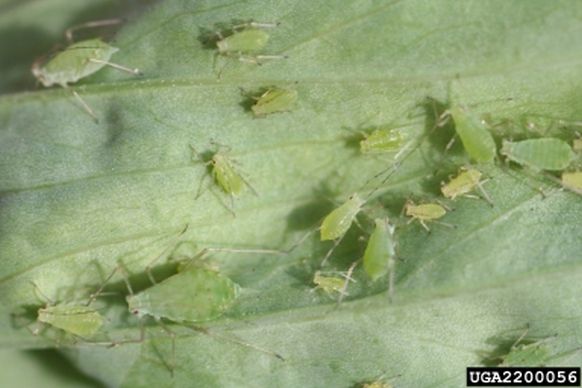
Aphid
(multiple species)
Aphid species are numerous and highly destructive to crops. They multiply quickly and in some cases are vectors of disease.
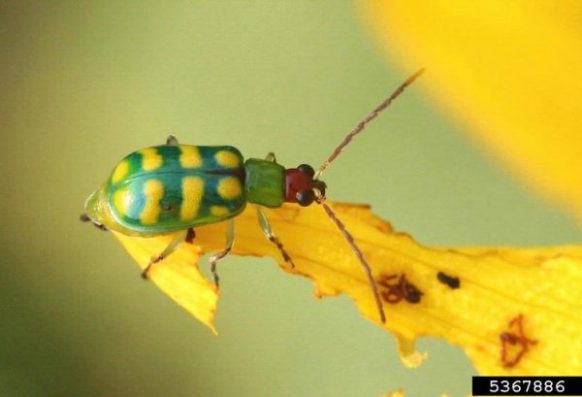
Banded Cucumber Beetle
Diabrotica balteata
Banded Cucumber Beetle adults eat holes in leaves and pods of host plants. Larva feed on roots. It is a vector of bacterial wilt disease in cucurbits and viral diseases in beans.
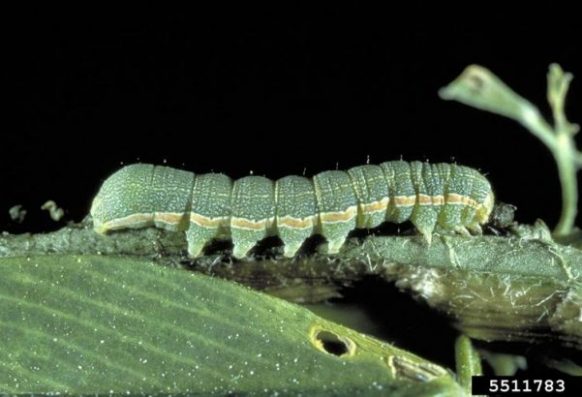
Beet Armyworm
Spodoptera exigua
Beet Armyworm is a crop pest that (along with its cousin, the fall armyworm) can devastate a crop within days of first being detected. It is a larval form in the lepidoptera family.
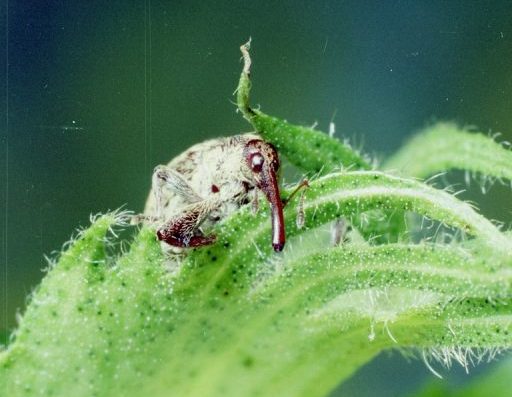
Boll Weevil
Anthonomus grandis
Boll Weevil is a pest that has been plaguing cotton for as long as it has been grown, Eradication programs in the US and Mexico have reduced, but not eliminated the threat.
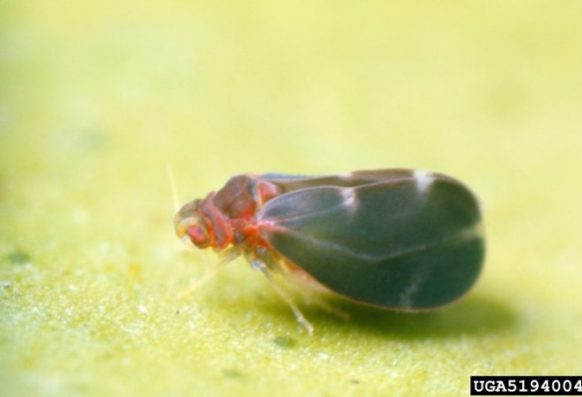
Citrus Blackfly
Aleurocanthas woglumi
Citrus Blackfly has over 300 hosts, but prefers citrus. Adults and nymphs suck plant sap and secrete “honeydew” that promotes the growth of sooty mold.
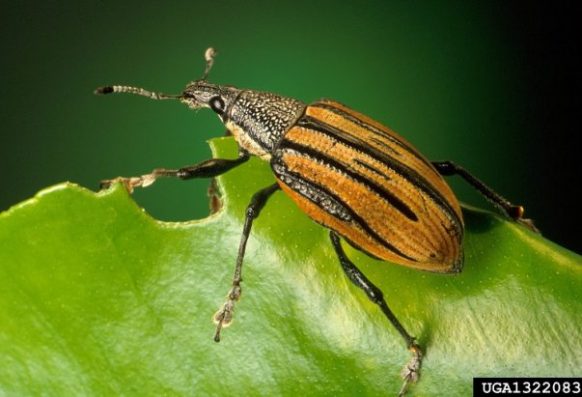
Citrus Root Weevil
Diaprepes abbreviatus
Citrus Root Weevil larval stage feeds on roots, increasing vulnerability of root systems to Phytopthora and other soil borne diseases. Adults create semi-circular feeding pattern on edges of leaves.
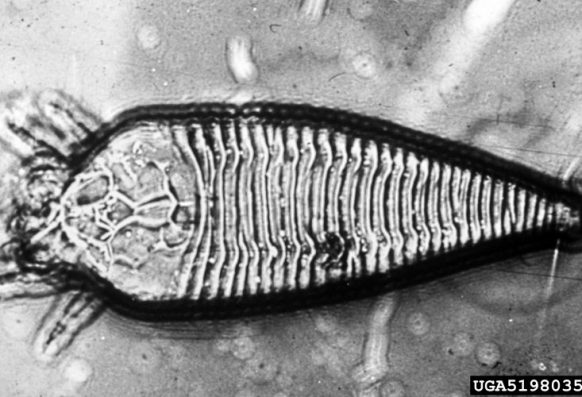
Citrus Rust Mite
Phyllocoptruta oleivora
Citrus rust mite can not be seen with unaided human eye. Present throughout the year, but peak populations usually occur in June and July.

Colorado Potato Beetle
Leptinotarsa decemlineata
Colorado Potato Beetle is an important pest of potatoes. It is difficult and expensive to control.
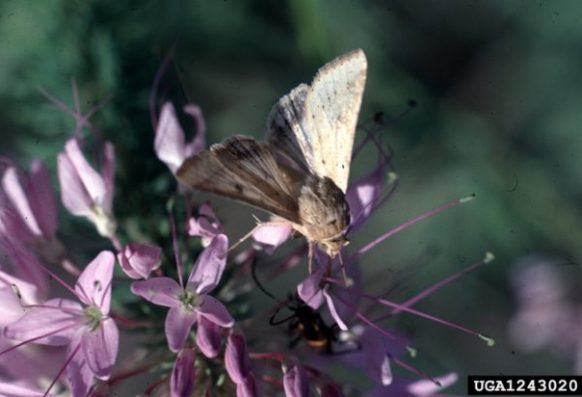
Cotton Bollworm
Helicoverpa zea
Cotton Bollworm is a significant pest of cotton. It is a larval stage in the lepidoptera order, and is also known as the tomato fruitworm and corn earworm.
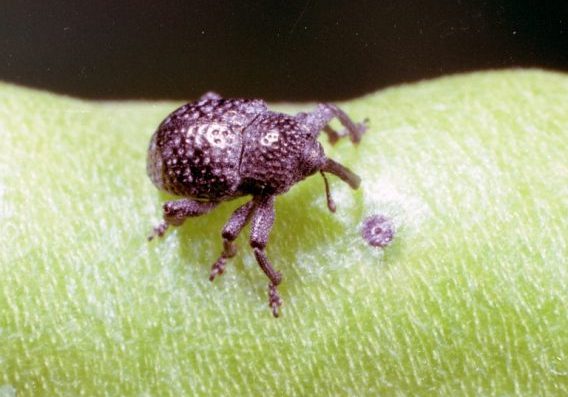
Cowpea Curculio
Chalcodermus aeneus
Cowpea Cucurlio primarily feed on various legumes, but can be found on cotton, soybean, and strawberry among other plants.

European Corn Borer
Ostrinia nubilalis
The european corn borer is one of the US and Canada’s most damaging pest which infest at least 250 plants including corn, beans, pepper, and potato.
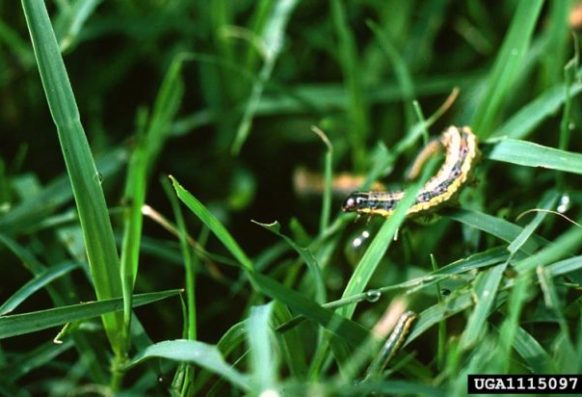
Fall Armyworm
Spodoptera frugiperda
Fall Armyworm is a crop pest that (along with its cousin, the beet armyworm) can devastate a crop within days of first being detected. It is a larval form in the lepidoptera family.
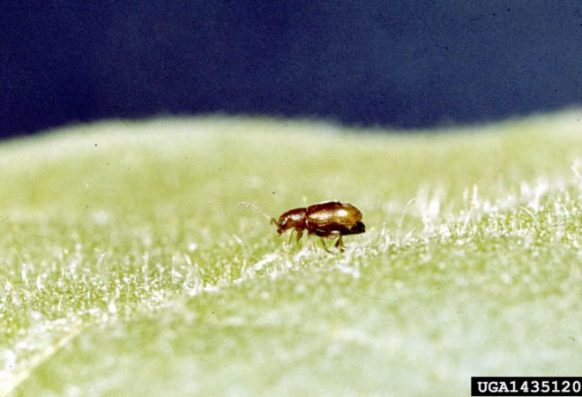
Flea Beetles
Aphthona spp.
Flea Beetles include a wide variety of species given the name due to their ability to jump from predators or other disturbances.
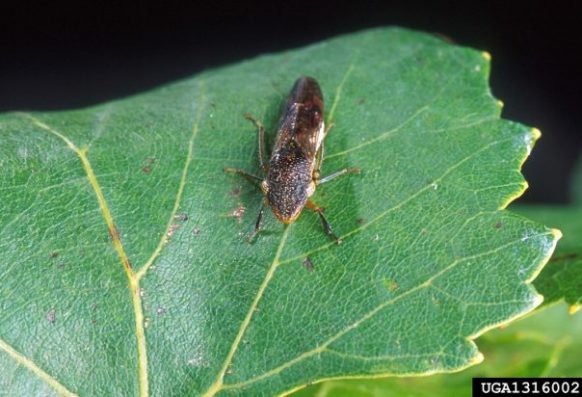
Glassy-winged Sharpshooter
Homalodisca vitripennis
The glassy-winged sharphooter preferred hosts include citrus, holly, sunflower, and crape myrtle and is found from east Texas as far west as Val Verde county.
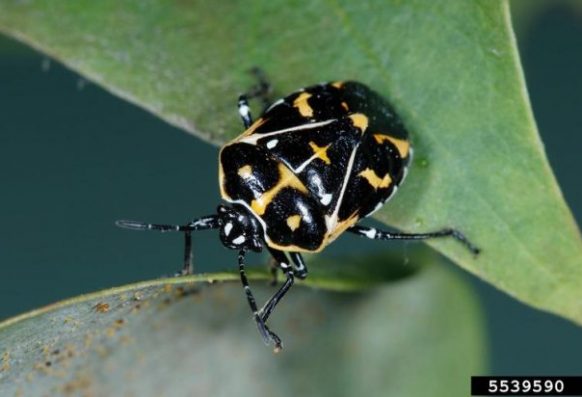
Harlequin Bug
Murgantia histrionica
The harlequin bug has the ability to destroy entire crops if left uncontrolled. Its preferred crops are horseradish, cabbage, cauliflower, collards, mustard, brussels sprouts, turnip, kohlrabi and radish.

Leaf-footed Bug
Leptoglossus phyllopus
This pest is a piercing, sucking insect that discolors and/or distorts normal growth in fruit and seeds. Its primary weed host is thistle, but can also be found on jimsonweed, goldenrod, and elderberry, as well as many other agricultural crops.
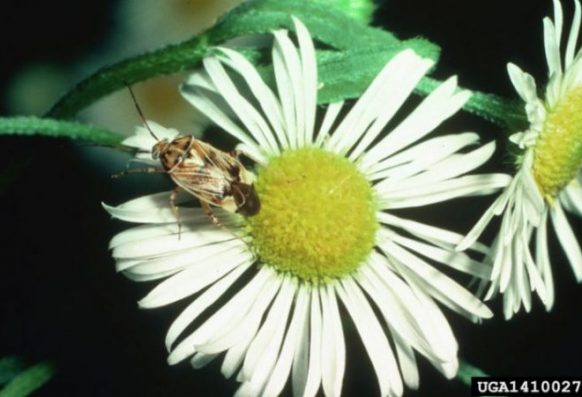
Lygus
Lygus hesperus Lygus lineolaris Lygus elisus
Over half of the cultivated plant species grown in the U.S. are hosts of lygus. Adults and nymphs pierce flower and fruiting structures causing great damage.
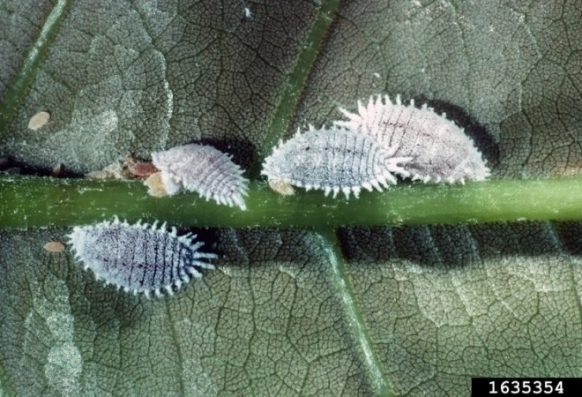
Mealybug
Pseudococcidae
Mealybugs are soft-bodied scale like insects that have a wide variety of hosts and are closely related to whiteflies, aphids, and scale insects.
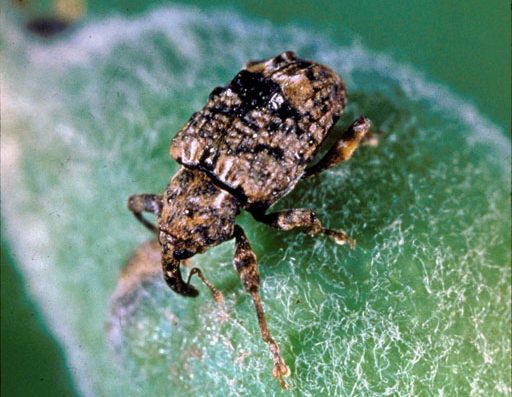
Plum Curculio
Conotrachelus nenuphar
Plum Curculio is a devastating pest of stone fruits, especially peaches and plums
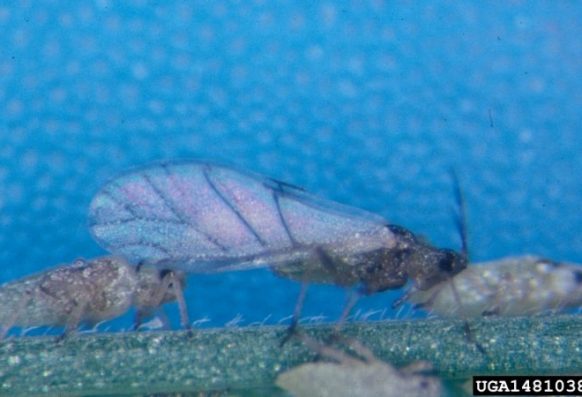
Russian Wheat Aphid
Diuraphis noxia
Russian Wheat Aphid can be a devastating pest of wheat in the Great Plains. It characteristically causes the wheat leaf to curl or roll, protecting the aphid infestation from enemies.
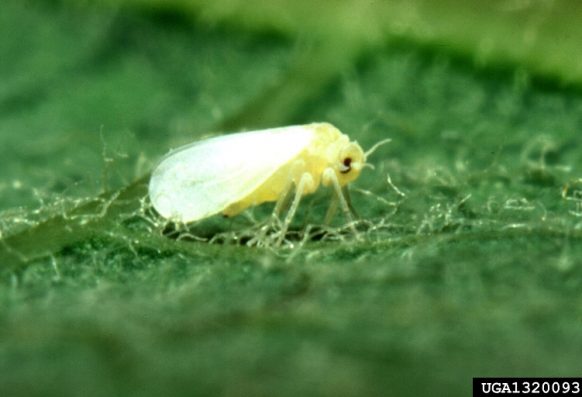
Silverleaf Whitefly
Bemesia argentifolii
Silverleaf Whitefly is an economically important pest that attacks a variety of food and fiber crops. It is a special problem for the cucurbit family, where it is an important vector of disease.
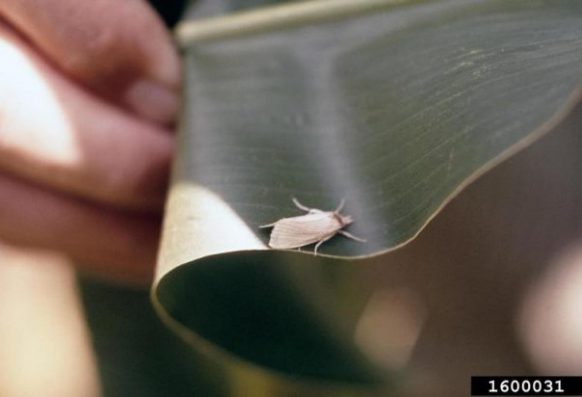
Southwestern Corn Borer
Diatraea grandiosella
Southwestern corn borer relatively has few host plants. Hosts include: corn, milo, maize, and sorghum. Preferred host is corn (Zea mays).
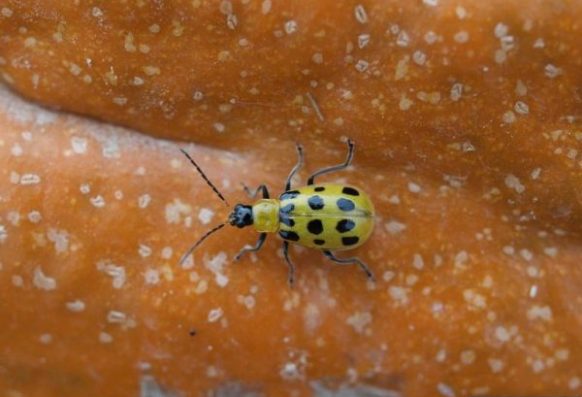
Spotted Cucumber Beetle
Diabrotica undecimpunctata howardi
The spotted cucumber beetle is a vector for bacterial wilt disease (Erwinia tracheiphila) in most cucurbits and cucumber mosaic virus.
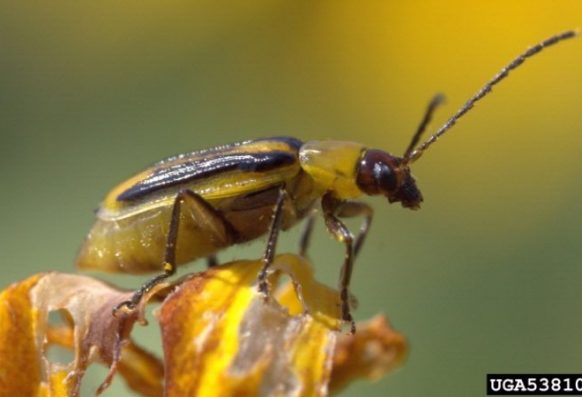
Striped Cucumber Beetle
Acalymma vittatum
The striped cucumber beetle is a vector for bacterial wilt disease (Erwinia tracheiphila) in most cucurbits and cucumber mosaic virus.

Tomato Pinworm
Keiferia lycopersicella
Tomato pinworm damage can be confused with that of leafminers and potato tuberworms. Their feeding damage can make hosts vulnerable to secondary infections by various plant pathogens.

Western Flower Thrips
Frankliniella occidentalis
Western Flower Thrips’ (WFT) function as a vector for the topsoviruses tomato spotted wilt virus (TSWV) and impatiens necrotic wilt virus (INWV).
